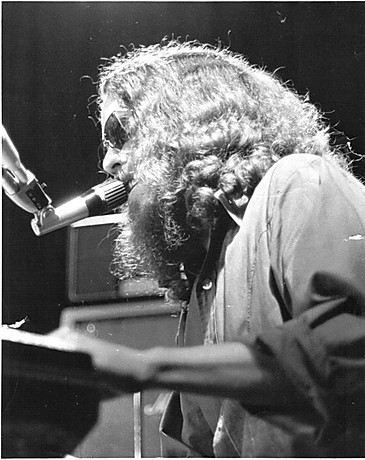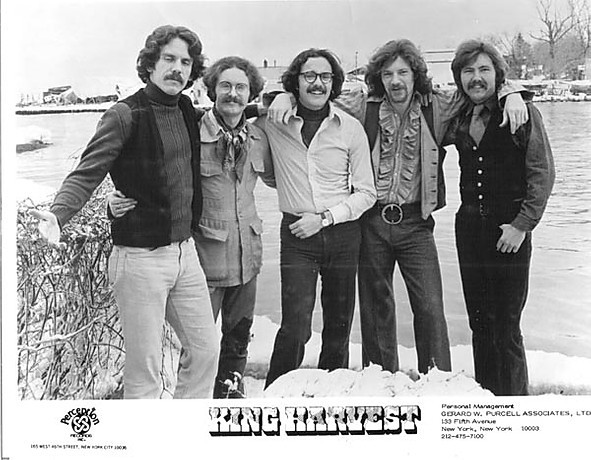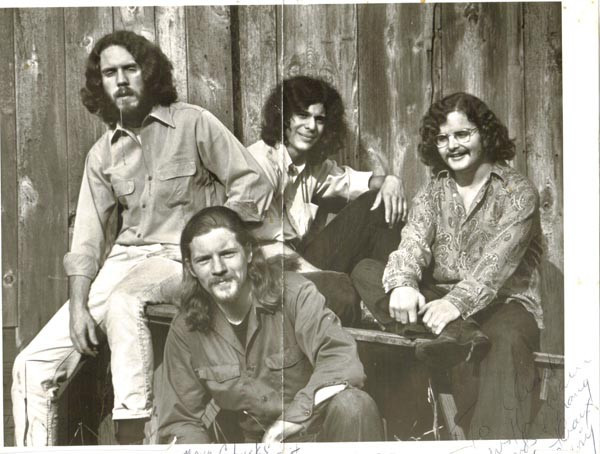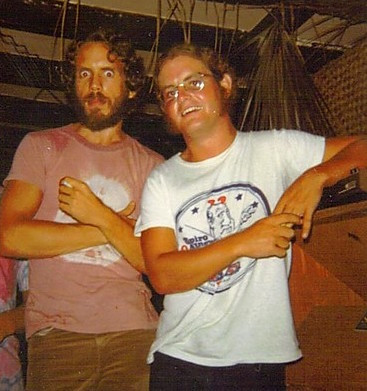Have you ever listened to a song that instantly lifts your spirits, a melody so infectious it makes you want to dance under the stars? For many, “Dancing in the Moonlight” is that very song. But behind its joyful rhythm and carefree lyrics lies a story of unexpected darkness and remarkable resilience. This is the tale of how a traumatic experience inspired Sherman Kelly, the creative force behind this iconic 70s hit, to pen a song that would resonate with generations, even if you might think of it as the “Harvest King Dancing In The Moonlight.”
The journey begins with a canceled concert. Like many music enthusiasts, I was eagerly anticipating a live performance – a triple bill featuring Pure Prairie League, Poco, and Orleans. Orleans, of course, is known for their captivating rendition of “Dancing in the Moonlight,” a song originally by King Harvest and written by the talented Sherman Kelly. Intrigued, I delved into YouTube, watching various performances and covers, and stumbled upon a comment – a comment from Sherman Kelly himself.
This discovery sparked my curiosity. As someone fascinated by the stories behind music, I reached out to Sherman Kelly, hoping to uncover the origins of “Dancing in the Moonlight.” To my delight, he agreed to share his story, a narrative far more profound and unexpected than I could have imagined.
 Sherman Kelly onstage in the 1970s
Sherman Kelly onstage in the 1970s
From Paradise to Peril: The Night That Changed Everything
In 1969, Sherman Kelly was living a seemingly idyllic life, managing a nightclub in St. Thomas, Virgin Islands. An impromptu day trip to St. Croix on a rented yacht took a dark turn when Kelly and his girlfriend succumbed to severe seasickness. Upon reaching St. Croix, while their companions went ashore for dinner, Kelly and his girlfriend, still unwell, decided to forgo food and stay behind. Later, seeing the yacht swaying in the harbor, they opted to spend the night in town, hoping to avoid further seasickness.
However, disaster struck. In his disoriented state, Kelly realized he had left his wallet on the yacht, leaving them without funds for accommodation. A desperate attempt to find lodging at a local inn led to a shocking proposition from the innkeeper. Refusing to compromise, they sought shelter at another inn, only to be turned away again.
“It’s a beautiful night. Why don’t we just stretch out on the beach?” Kelly’s girlfriend suggested. And so they did. This seemingly romantic decision led them into a nightmare.
Awakening in a hospital bed became Kelly’s harsh reality. He later pieced together the horrific events of that night through fragmented memories and accounts from others. While sleeping on the beach, they were brutally attacked by the notorious Fountain Valley Gang. Kelly was savagely beaten, and his girlfriend was assaulted. In a moment of desperate resilience, Kelly regained consciousness and fought back, his resistance startling the attackers and causing them to flee.
 King Harvest in 1972
King Harvest in 1972
A Song Born from Darkness: Envisioning a Better World
The aftermath was harrowing. Kelly and his girlfriend, injured and traumatized, found their way to the only hospital in St. Croix. Unbeknownst to them, they were among the early victims of the Fountain Valley Gang, who would later be infamous for a mass murder that devastated St. Croix’s tourism industry. Kelly’s condition was so critical that he overheard doctors discussing his grim prognosis, doubting his survival.
But Sherman Kelly defied expectations. After days in the St. Croix hospital, he returned to New York, where further medical treatment addressed his extensive injuries. Back home in Ithaca, New York, while recovering from his physical wounds and enduring persistent pain, Kelly turned to songwriting.
It was during this convalescent period that the seeds of “Dancing in the Moonlight” were sown. “I envisioned an alternate reality, the dream of a peaceful and joyous celebration of life,” Kelly explained. “It was just me imagining a better world than the one I had just experienced in St. Croix.” From unimaginable trauma emerged an idea for a song about joy, peace, and unity – a world bathed in moonlight, where everyone could dance freely.
From Boffalongo to King Harvest: The Song Takes Flight
Before King Harvest made it a hit, “Dancing in the Moonlight” had earlier iterations. In 1970, Kelly joined Boffalongo, a band featuring his brother Wells Kelly and future Orleans member Larry Hoppen. Boffalongo recorded “Dancing in the Moonlight” for their album “Beyond Your Head,” with Sherman on lead vocals. However, Kelly candidly admits his vocal performance on this version was subpar, attributing it to misguided studio decisions.
 Boffalongo, circa 1970
Boffalongo, circa 1970
Despite Kelly’s self-critique, the Boffalongo version gained regional popularity. Another group, High Broom, also recorded it in 1970, but it didn’t chart. When Boffalongo dissolved, Wells Kelly joined King Harvest, a band that included Doc Robinson, also from Boffalongo. Wells introduced “Dancing in the Moonlight” to King Harvest, and this time, it was magic.
Released as a single in 1972, the King Harvest version, featuring Robinson on lead vocals, soared up the charts, reaching No. 10 on the Cash Box Top 100 and No. 13 on the Billboard Hot 100. King Harvest invited Sherman Kelly to tour with them, where he provided harmonies while Robinson sang lead on “Dancing in the Moonlight.” Despite the song’s success and the thrill of touring, Kelly found the road life unappealing and soon returned to his own path.
Orleans and Beyond: The Enduring Legacy of Moonlight
Wells Kelly later joined forces with John Hall and Larry Hoppen to form Orleans. Orleans also recorded “Dancing in the Moonlight,” further cementing the song’s place in music history. Even today, Orleans, featuring John Hall and Larry Hoppen’s brothers, continues to perform “Dancing in the Moonlight,” keeping its spirit alive.
 Sherman Kelly, left, and Larry Hoppen, who would go on to form the band Orleans
Sherman Kelly, left, and Larry Hoppen, who would go on to form the band Orleans
Sherman Kelly’s journey took him beyond music. He pursued higher education, earning a master’s degree in social work and psychotherapy, and dedicated himself to helping others as a psychotherapist. However, music remained a part of him. In 2008, he released “Burnin’ the Candle,” an album featuring collaborations with his late brother Wells.
“Dancing in the Moonlight” experienced a resurgence in 2000 when Toploader’s cover became another hit. The song has also graced films, television shows, and video games, including “Guardians of the Galaxy,” proving its timeless appeal.
The Moonlight Still Shines
From a horrific night on a St. Croix beach to becoming a beloved song, “Dancing in the Moonlight” is a testament to the power of the human spirit to find light even in the darkest of times. Sherman Kelly’s story reminds us that art can be born from pain, and that a vision of peace and joy can emerge from personal tragedy. The next time you hear “Dancing in the Moonlight,” remember the “Harvest King” of songwriting, Sherman Kelly, and the incredible journey behind this timeless classic.
